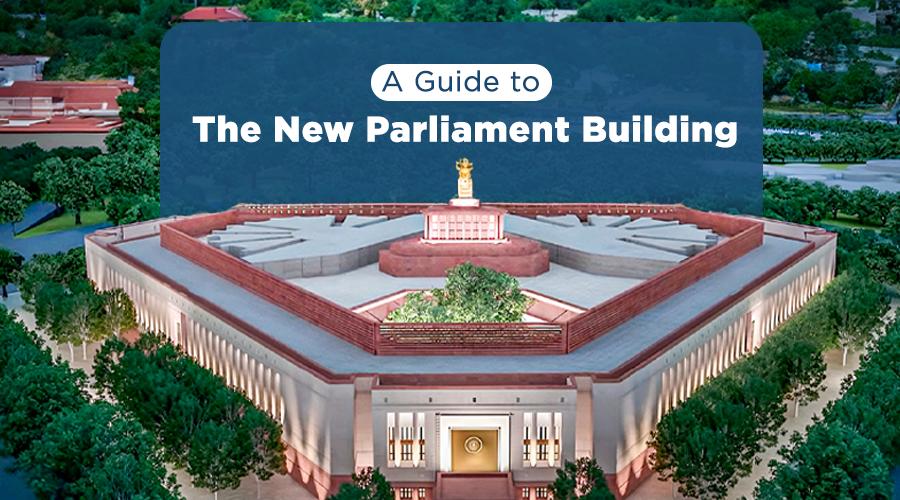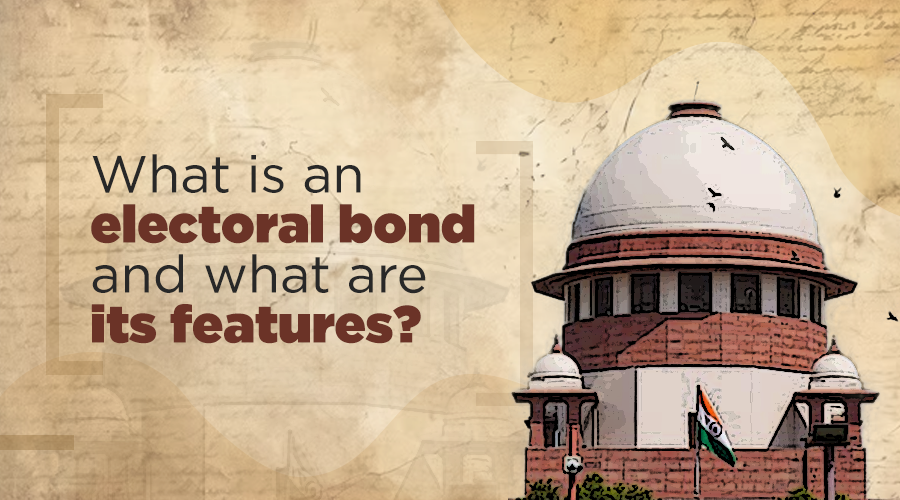The new Indian Parliament, unveiled on May 28, 2023 and a core part of the Central Vista Redevelopment project, stands as a triangular edifice with lion-capitol on top. As India prepares for the 18th Lok Sabha, let’s familiarise ourselves with some interesting facts about the new Parliament where the future of our country will take shape.
Progress Through Architecture: Need for the New Parliament Building
With projections indicating a significant increase in Lok Sabha seats after the expected lift of the seat count freeze, the original building would become ill-equipped to accommodate the needs of a bicameral legislature of India. Moreover, the ageing infrastructure of the existing Parliament suffered from various distresses, including water seepage due to added services such as air-conditioning and CCTV cameras, compromising both functionality and aesthetics. Other challenges include fire safety concerns, outdated communication structures, acoustics within the halls and need for structural safety measures as per seismic shifts in the city. In light of these requirements, the construction of a new Parliament building emerged as an imperative step towards ensuring the effective functioning, safety, and modernization of India’s parliamentary infrastructure.
13 Things You Need to Know About the New Parliament Building
- The new Parliament building has a unique triangular shape, a result of the triangular plot of land it sits on. Inspired by sacred geometry, its design and materials complement those of the old Parliament. Both structures are intended to function as one complex, symbolising unity and continuity in India’s democratic legacy.
- The new Parliament building utilises green construction techniques, slashing electricity consumption by 30% compared to the old one. It incorporates rainwater-harvesting and water-recycling systems while maximising space efficiency. Designed to last 150 years, it is sustainable and aims for resource conservation.
- Given Delhi’s location in seismic zone-V, the new Parliament building has been engineered to withstand earthquakes, ensuring the safety and security of its occupants.
- The new Lok Sabha chamber features peacock themed designs carved on the walls and ceiling, enhanced by teal carpets that complement the overall theme. The Lok Sabha chamber has been expanded to accommodate 888 seats, a significant increase from the previous 543, with the potential for further expansion to 1,272 seats if needed.
- The Rajya Sabha chamber with its lotus-themed decor, has been expanded to accommodate 384 Members of Parliament (MPs), a notable increase from the previous capacity of 250. Within both the Lok Sabha and the Rajya Sabha, benches have been designed to seat two MPs each with their individual touch screens on their desks, promoting collaboration and interaction among members.
- The recently constructed edifice includes a Constitution Hall, which serves as a repository documenting the evolution of Indian democracy.
- The construction of the new building involved sourcing materials from various regions of India to create a rich tapestry of architectural elements. Sandstone from Sarmathura in Dholpur and granite from Lakha village in Jaisalmer, Rajasthan, were selected for both the interior and exterior. The interior decor features wood sourced from Nagpur, crafted by artisans from Mumbai to bring intricate wooden designs to life. Furthermore, traditional hand-knotted carpets woven by Bhadohi weavers in Uttar Pradesh add cultural authenticity.
- The 16-foot bronze statue of Mahatma Gandhi, installed at the main entrance of the old Parliament since 1993, has been relocated between the old and new buildings. It now faces the old structure and is positioned near the entrance used by the Lok Sabha Speaker.
- The new building displays national symbols, including the 9,500 kg, 6.5-meter-tall Lion Capital of Ashoka, visible from a distance. At the entrance, carved stone features the Ashoka Chakra and the words ‘Satyameva Jayate’, symbolising India’s strength and commitment to truth.
- The golden sceptre, Sengol, presented to Jawaharlal Nehru by Tamil Nadu priests on the eve of Independence, is stationed in the new Lok Sabha chamber near the Speaker’s podium, symbolising the transfer of power from the British.
- The new building boasts galleries showcasing India’s cultural diversity. ‘Shilp’ displays textile installations and pottery from all states, while ‘Sthapatya’ exhibits yoga asanas and iconic monuments from across the country.
- At every entrance, the building features guardian statues of auspicious animals from Indian culture and Vaastu Shastra, including the elephant, horse, eagle, swan, and mythical creatures makara.
- The new Parliament building houses a Foucault pendulum, showcasing the Earth’s rotation. At Parliament’s latitude, it completes one rotation every 49 hours, 59 minutes, and 18 seconds.
Source:
https://www.drishtiias.com/daily-updates/daily-news-analysis/india-new-parliament-house
https://www.forbesindia.com/article/explainers/new-parliament-house-of-india/88417/1





